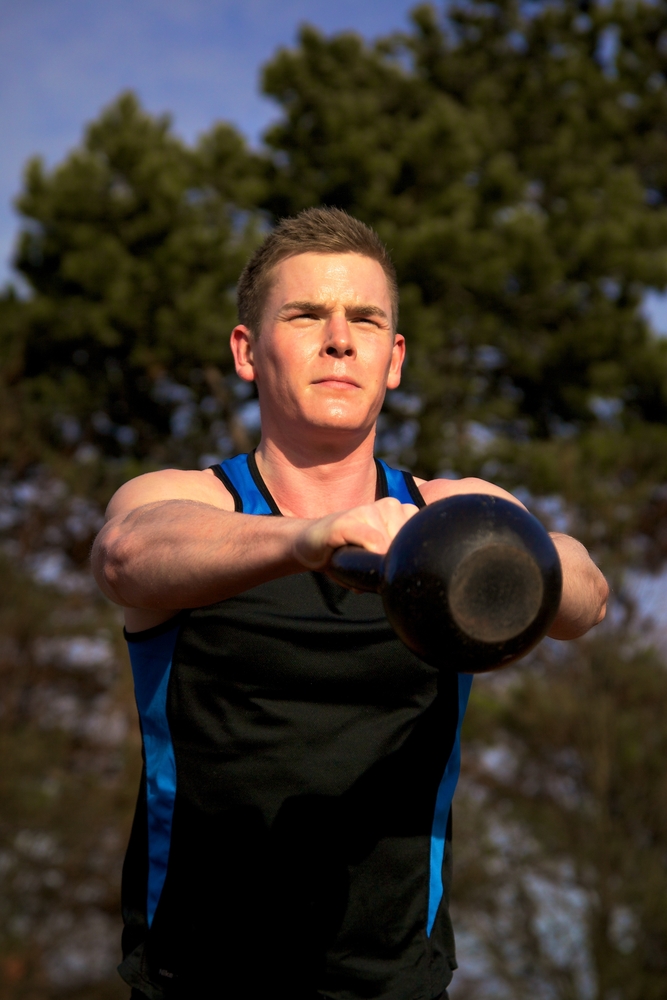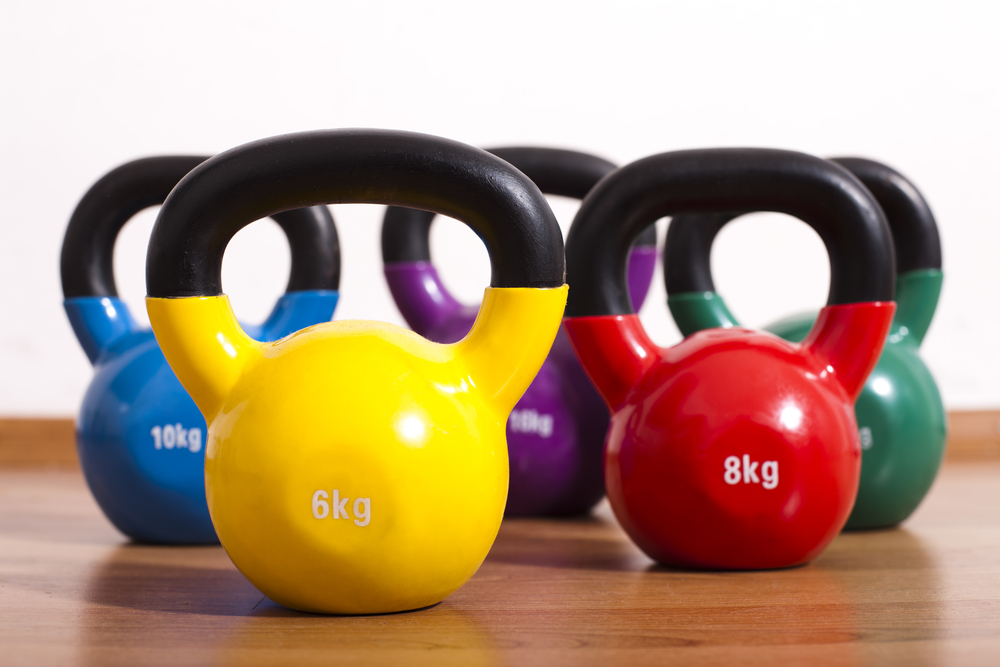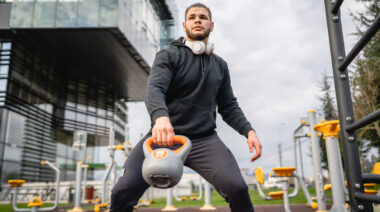Kettlebells are gaining popularity as a method of training strength and conditioning. There are a lot of claims as to what can be accomplished with kettlebells, but what muscles do they really activate?
Kettlebells are gaining popularity as a method of training strength and conditioning. There are a lot of claims as to what can be accomplished with kettlebells, but what muscles do they really activate?
A recent study published in The Journal of Strength and Conditioning Research examined a series of basic kettlebell movements. Researchers wanted to learn more regarding two aspects of kettlebells:
- Muscle activation involved in kettlebell movements.
- The effects of kettlebells, positive or negative, on loading the lower back.
In the study 3D imaging, electromyography, and ground force measurements were gathered for of all the movements performed by the test subjects. Subjects in the main study were chosen at random from a university and screened for injury. A single case study was also conducted on Russian kettlebell master Pavel Tsatsouline, performing the same techniques.
Subjects performed the following exercises with a 16kg kettlebell:
- Kettlebell swing to chest height
- Kettlebell swing with Kime (abdominal pulse at the height of the swing)
- Kettlebell swing to snatch
- Kettlebell carry – racked on the back of the arm
- Kettlebell carry – bottoms-up style
Kettlebell Swing Analysis
According to the research, the kettlebell swing uses the back muscles (latissimus dorsi and erector spinae) throughout the movement, but they are the main muscles engaged in the initiation phase of the swing. The abdominal muscles are primarily activated at precisely the halfway point and the gluteal muscles engage for the second half of the swing. Shear and compression forces were determined to be highest at the beginning of the swing.
Average range of flexion and extension in the swing:
 Lumbar spine – 26º of flexion at beginning to 6º of extension at peak.
Lumbar spine – 26º of flexion at beginning to 6º of extension at peak.- Hips – 75º of flexion at beginning to 1º of extension at peak.
- Knees – 69º of flexion at beginning to 2º of extension at peak.
Adding “Kime” to the swing did essentially nothing other than engage the abdominals to a greater degree at the peak of the swing. The swing to snatch was very similar to the swing except for a general increase in the activation of all muscle groups. Overall spine loads, compression and shear, were determined to be low for swing, swing with Kime, and swing to snatch.
Kettlebell Carry Analysis
The main finding in the kettlebell carry analysis was the increase in muscle activation in the “bottoms-up” position. The average muscle activation was much higher in the bottoms-up carry than it was in either the racked position or regular unloaded walking. As a result, joint compression and shear forces were also much higher in the bottoms-up position. Researchers determined the bottoms-up position required higher degrees of core and grip strength.
Case Study: Pavel Tsatsouline
Researchers also performed a case study on the kettlebell swing of Russian kettlebell master Pavel Tsatsouline. Tsatsouline swung a 32kg kettlebell for the tests. It was noted that Tsatsouline powerfully tightened his hip at the top of each swing resulting in tremendous forces, but also based on the research a technique not recommended for those with lower back issues given the speed at which his spine moved.
Conclusion
Researchers concluded that the relationship of compression to shear forces on the spine are significantly different in the kettlebell swing than they are in more traditional strength exercises like  the deadlift or squat. The kettlebell swing has much higher shear forces and therefore athletes with inadequate movement patterns or bad habits of allowing their spine to move while under load could find the kettlebell swing to be more painful than traditional lifts.
the deadlift or squat. The kettlebell swing has much higher shear forces and therefore athletes with inadequate movement patterns or bad habits of allowing their spine to move while under load could find the kettlebell swing to be more painful than traditional lifts.
On the other hand, researchers noted the fast cycles of muscle activation and relaxation required to perform the concentric and eccentric phases of the swing repeatedly could have benefits in a variety of sports.
In their final words, the researchers noted:
This unique exercise may be very appropriate for some exercise programs emphasizing posterior chain power development about the hip. In contrast, the exercise also appears to result in unique compression and shear load ratios in the lumbar spine that may account for the irritation in some people’s backs, who otherwise tolerate very heavy loads…Thus, quantitative analysis provides an insight into why many individuals credit kettlebell swings with restoring and enhancing back health and function, although a few find that they irritate tissues.1






